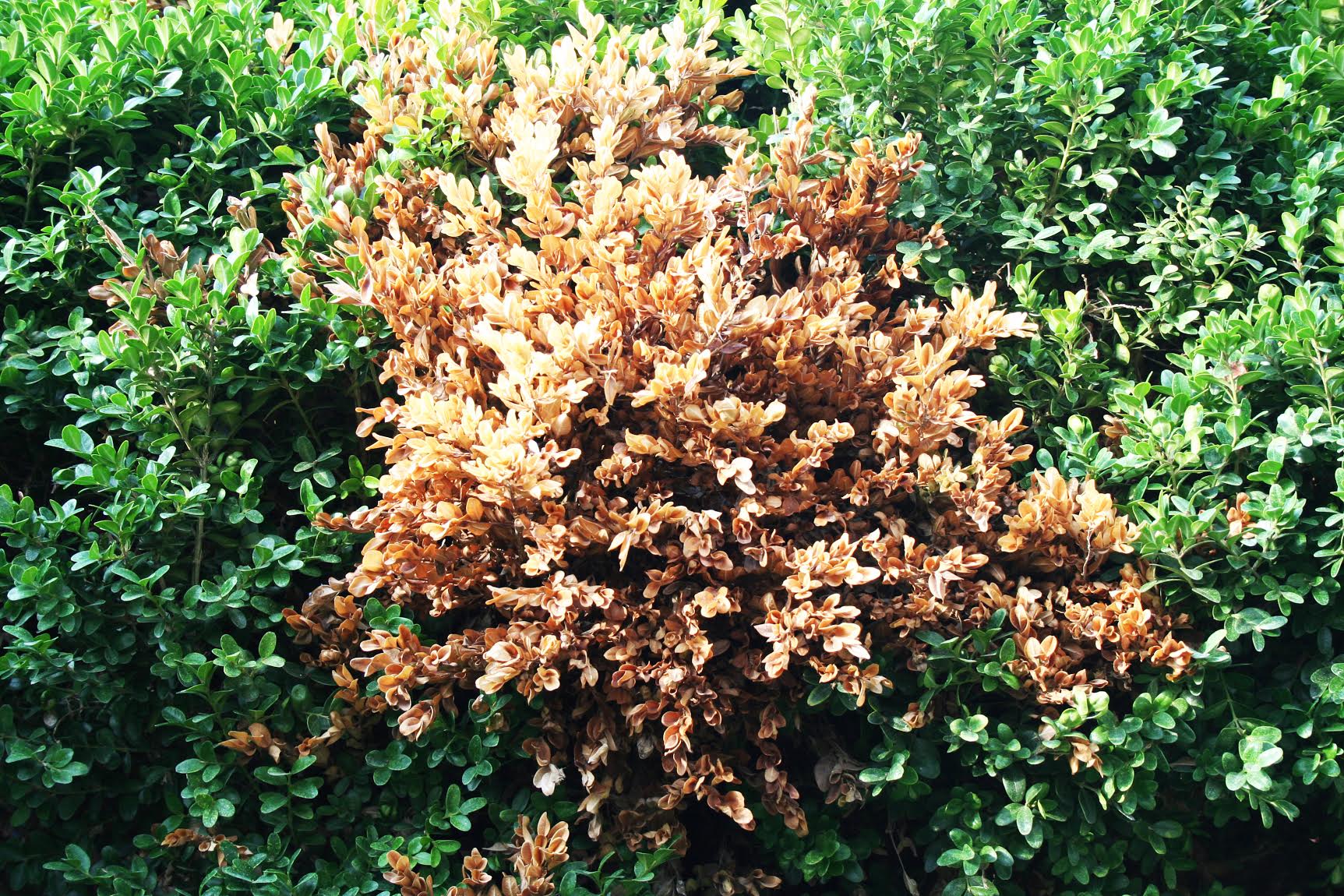Volutella Blight Boxwood Treatment: Learn About Volutella Blight Control


Boxwoods are attractive, evergreen shrubs that retain their emerald-green color year-round. Unfortunately, boxwoods are susceptible to a variety of diseases, and a fungal disease known as volutella blight on boxwood is one of the worst. Read on to learn about volutella blight control.
Symptoms of Volutella Blight on Boxwood
The first sign of volutella blight on boxwood is delayed and stunted growth in spring, typically followed by the dieback of branches. Leaves turn yellow, darkening to tan as the disease progresses, often with black streaks on the petioles (small stems that join the leaves to the branch). Unlike healthy leaves that spread out, leaves affected by volutella blight remain close to the stem. If conditions are wet, you may notice masses of pinkish spores on the lower surface of foliage. The bark of affected plants peels away easily.
Volutella Blight Control and Prevention
To control or prevent this disease, the following precautions should be taken:
- Ensure boxwoods are planted in well-drained soil with a soil pH between 6.8 and 7.5.
- Spray boxwood with a copper-based fungicide before new growth emerges in spring, then spray again immediately following pruning, and again in summer and autumn. Spray carefully to penetrate the thick foliage. Remember that fungicides can be an effective preventive measure, but they are not a cure.
- Water boxwood as needed to keep the soil evenly moist but never soggy. Avoid overhead watering. Instead, water at the base of the plant, using a garden hose, drip system, or soaker.
Volutella Blight Boxwood Treatment
Sanitize pruning tools before and after each use. Use sharp tools to prevent scratching and tearing plant tissue. Prune the diseased boxwood to improve air circulation, light penetration, and overall growing conditions. Remove all dead growth, including leaves that are caught in the crotch of branches. Work carefully; pruning wounds provide an entry point for the disease. Prune only when the plant is dry, as pathogens spread quickly in damp conditions. Rake up all debris under the plant after pruning, then burn diseased debris immediately to prevent the spread of the disease. Alternatively, dispose of debris in a tightly sealed plastic bag. Never compost diseased plant material, and keep in mind that fungus can live in the debris for as long as five years.
Gardening tips, videos, info and more delivered right to your inbox!
Sign up for the Gardening Know How newsletter today and receive a free copy of our e-book "How to Grow Delicious Tomatoes".

A Credentialed Garden Writer, Mary H. Dyer was with Gardening Know How in the very beginning, publishing articles as early as 2007.
-
 Looking For Plants To Give You The Soft And Fuzzies? Try These 5 Fuzzy Leaf Plant Options
Looking For Plants To Give You The Soft And Fuzzies? Try These 5 Fuzzy Leaf Plant OptionsLovers of texture, drama, silver foliage and tactile plants will adore these special sensory garden additions. These fuzzy leaf plant options will leave you all aglow
By Susan Albert
-
 Get Ready For A Summer Of Hummers! Grow These Full Sun Hummingbird Plants and Flowers
Get Ready For A Summer Of Hummers! Grow These Full Sun Hummingbird Plants and FlowersIf you’re lucky enough to enjoy a sunny backyard, make sure you are maxing out on your pollinator opportunities and grow these full sun hummingbird plants and flowers
By Tonya Barnett